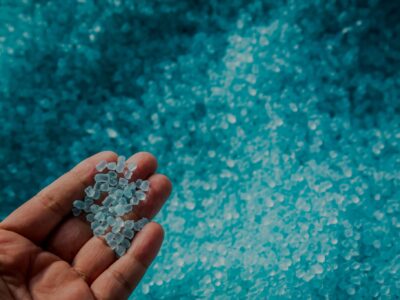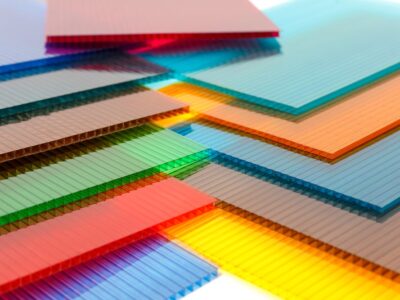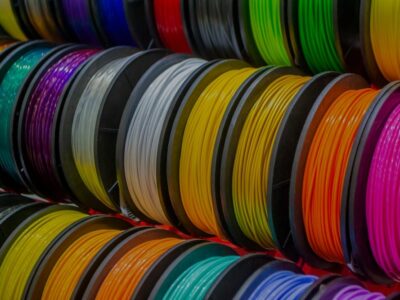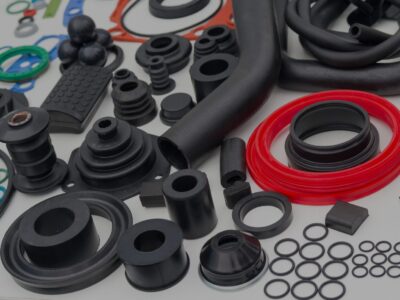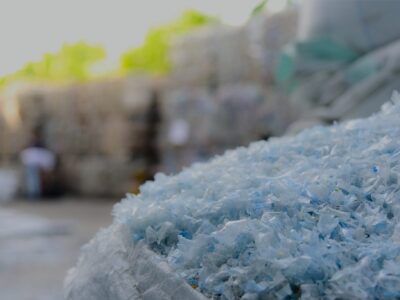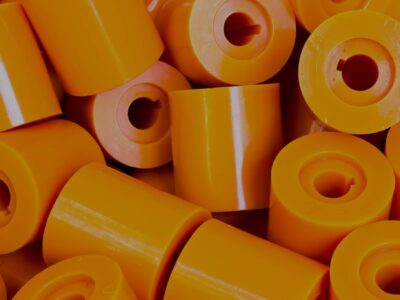Originally published on fastradius.com on July 20, 2020
Polypropylene is a thermoplastic polymer resin that can be easily combined with other composites. This material is extremely popular among engineers, particularly for injection molding, because it is exceptionally durable and suitable for a wide variety of use-cases. Common applications include living hinges, snap fits, reusable containers, and even car batteries.
For certain projects, engineers need to add fillers to their chosen material in order to achieve the desired chemical or mechanical properties. Fillers are microscopic particles added to a resin during the manufacturing process that may make the product stronger, more flexible, cheaper to produce, or provide some other quality or set of qualities. Here’s everything you need to know about polypropylene-compatible fillers.
Different types of polypropylene fillers
The primary advantage of fillers is that they allow engineers to augment the natural properties of polypropylene to avoid jumping to the next pricing tier of materials. For example, polypropylene is one of the cheapest engineering plastics to mold and fairly pliable in comparison to acrylonitrile butadiene styrene (ABS) or nylon. Polypropylene with 30% to 50% glass fiber filler is just as stiff as base nylon, for a fraction of the cost.
The three most common types of polypropylene fillers are glass beads or glass fiber, talc or magnesium, and calcium carbonate.
Glass beads or glass fiber fillers
Glass beads are microscopic beads of glass, while glass fibers are long strands of glass. Both varieties of glass fillers are used to strengthen the mechanical properties of the substrate — providing, for instance, improved flexural modulus, stiffness, or tensile strength. Glass beads are particularly well-suited for increasing chemical resistance and chemical absorption. However, adding glass fillers to polypropylene significantly drives up production costs.
Talc or magnesium fillers
In general, engineers add talc fillers to polypropylene when they require a thickening agent. Talc allows the resin to be injected in thicker wall sections without increasing sink or warpage. Like talc, magnesium offers similar advantages when added to polypropylene.
Calcium carbonate fillers
Calcium carbonate can be used to modify the thermal properties of polypropylene, thereby increasing the operating temperature of the material or improving insulation.
3 key considerations for choosing a filler
Fillers come in handy when engineers need to add certain chemical or mechanical properties to polypropylene resin, but they’re not necessary for every use-case. When engineers start a project, they’re looking for a thermoplastic that will suit their needs without modification; fillers only come into play if this isn’t possible. Here are three key considerations for choosing a polypropylene filler.
1. Understand what the filler should do
Before deciding on a filler, product teams should have a clear understanding of what they want to accomplish. If the product needs more stiffness, glass fibers may be an appropriate choice. If they’re making a large part, talc may be best because it helps to pack out a part by increasing its density. Careful upfront planning prevents costly delays.
2. Choose a filler based on performance
Along the same lines, engineers should consider the degree to which they are trying to modify the polypropylene. If only small modifications are required, it might be advisable to choose a different material rather than go through the added effort of employing fillers.
3. Compare costs
All fillers drive up costs, so it often makes sense to avoid them altogether. For example, using 70% glass-filled polypropylene will be more expensive than nylon, but will likely provide comparable mechanical strength — in which case it would be more energy and cost-effective to go with nylon from the get-go. Before deciding to use fillers, conduct a thorough cost-benefit analysis to determine whether the same chemical and mechanical properties can be achieved through other means.
Get started with SyBridge
Glass, talc, and calcium carbonate fillers are used to enhance polypropylene’s performance. When used effectively, engineers can add fillers to this resin and achieve chemical and mechanical properties that are comparable to other high-strength materials like nylon. Fillers can be expensive, however, and they’re not suitable for every use-case. An experienced manufacturing partner can help you make sure you’re making the best decision for your project.
The SyBridge team is your one-stop-shop for manufacturing innovation. When you partner with us, you gain access to an elite team of manufacturing experts, designers, and engineers who will see you through the entire production process, from design and prototyping to fulfillment. You’ll have our global manufacturing network and years of expertise at your disposal. Ask us anything — we’re ready to help. Contact us today.
